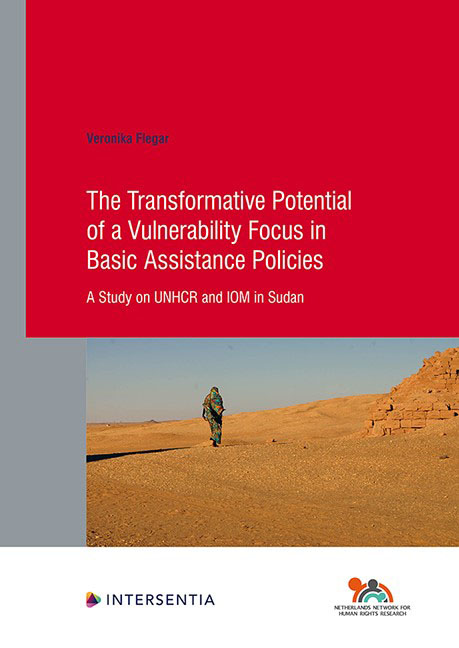 The Transformative Potential of a Vulnerability Focus in Basic Assistance Policies
The Transformative Potential of a Vulnerability Focus in Basic Assistance Policies Published online by Cambridge University Press: 11 November 2021
This chapter explains the methodology as well as the methods and limitations of the data collection and analysis of the two case studies. The chapter starts by providing an overview of the most relevant methodological considerations (4.1). Subsequently, the chapter outlines how the study tried to ensure the quality and trustworthiness of this research (4.2). The chapter then explains the choices regarding the data collection methods and outlines the data collection process (4.3) before elaborating on the different steps involved in the data analysis (4.4). Lastly, the chapter points out practical limitations and the limitations resulting from these data collection and data analysis choices in this study (4.5).
To recapitulate, the main research question this study seeks to answer is the following:
How can the vulnerability focus in basic assistance policies by UNHCR and IOM in Khartoum (Sudan) contribute to the vulnerability notion's alleged transformative potential for the realisation of universal human rights?
In essence, the case studies sought to shed light on the complexities of potential influences, preferences, choices and challenges that underlie the content and form of a vulnerability assessment. I was interested in diversity and variation rather than sameness or representativeness. During the research process I grouped these complexities into administrative dilemmas and contextual constraints as the two central themes that interplay with the design and implementation of the vulnerability assessment (compare Chapter 3).
METHODOLOGY
TWO COLLECTIVE CASE STUDIES AND THE GROUNDED THEORY METHOD
The study relies on two collective case studies that were analysed through Corbin and Strauss’ grounded theory method. This section explains why this combination of case studies and grounded theory method was adopted and how both approaches are thought to complement each other.
Case study research can be understood in a large variety of different ways. For the purposes of the present study, a case is defined as “a unit around which there are boundaries” and a case study is viewed as “an intensive, holistic description and analysis of a bounded phenomenon such as a program, an institution, a person, a process, or a social unit”. The present analyses of UNHCR's and IOM's vulnerability-focused basic assistance policies are case studies because the objects of these two case studies are clearly delimited (namely two specific vulnerability-focused basic assistance policies). This delimitation is “the single most important” distinguishing feature of a case study compared to other qualitative research methods.
To save this book to your Kindle, first ensure [email protected] is added to your Approved Personal Document E-mail List under your Personal Document Settings on the Manage Your Content and Devices page of your Amazon account. Then enter the ‘name’ part of your Kindle email address below. Find out more about saving to your Kindle.
Note you can select to save to either the @free.kindle.com or @kindle.com variations. ‘@free.kindle.com’ emails are free but can only be saved to your device when it is connected to wi-fi. ‘@kindle.com’ emails can be delivered even when you are not connected to wi-fi, but note that service fees apply.
Find out more about the Kindle Personal Document Service.
To save content items to your account, please confirm that you agree to abide by our usage policies. If this is the first time you use this feature, you will be asked to authorise Cambridge Core to connect with your account. Find out more about saving content to Dropbox.
To save content items to your account, please confirm that you agree to abide by our usage policies. If this is the first time you use this feature, you will be asked to authorise Cambridge Core to connect with your account. Find out more about saving content to Google Drive.